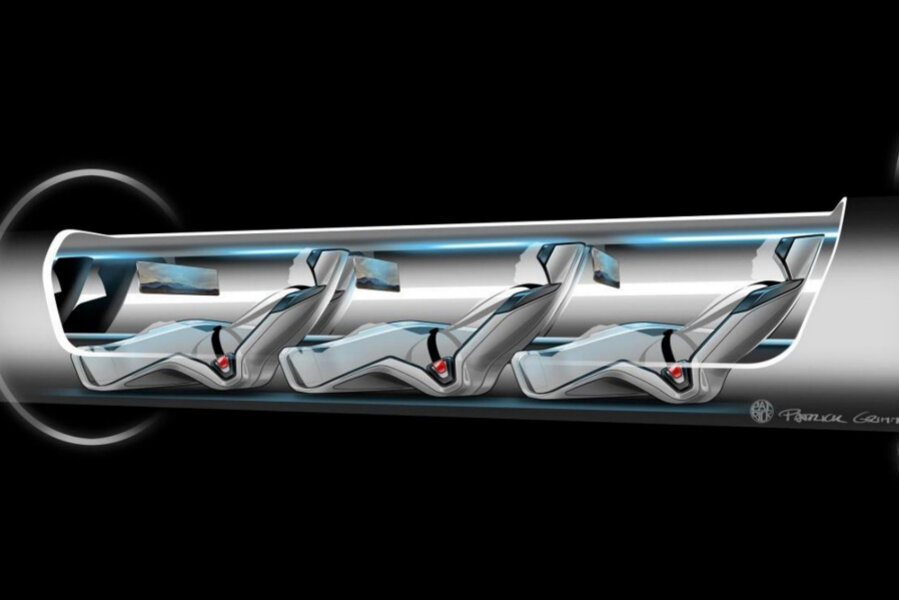SpaceX selects 124 teams to compete to build supersonic Hyperloop pods
Loading...
In 2013, SpaceX and Tesla co-founder Elon Musk announced the Hyperloop, an enclosed tube that would stretch for hundreds of miles between cities and allow people to travel at more than 700 miles per hour – jetting from Los Angeles to San Francisco, for example, in as little as half an hour.
Some critics at first dismissed the idea as impractical, but as engineers and scientists examined Mr. Musk’s white paper explaining the Hyperloop’s operation, they concluded it was worth pursuing.
Now, a consortium of aerospace engineers has designed an electric motor to power the prototype Hyperloop, a 1-kilometer test track is being built in Las Vegas, and SpaceX has selected 124 teams – mostly consisting of student engineers – to compete to design the pods that will travel through the Hyperloop.
Hyperloop works by reducing the pressure inside a straight tube and shooting a capsule through it at very high speed, using an air pump mounted on the capsule’s nose to reduce drag. The capsules will glide inside the tube on a layer of air, similar to the way a puck floats on an air-hockey table. The end result, Musk says, is a relatively affordable method of transportation that’s faster than air travel between cities that are close together.
The teams, which hail from 20 countries and 27 US states and have names such as “Pod People” and “Hullabaloop,” will present their concepts for Hyperloop pods at a competition to be held on January 29 and 30 at Texas A&M University. The teams will pitch designs and subsystems to a panel of judges from SpaceX, Tesla, and university engineering faculty, and one will be selected to build a prototype pod to run on a test track near SpaceX headquarters in California next summer.
Entrants not only have to come up with a feasible pod design; if they win, they have to find sponsors to actually build a prototype pod. “This is one of the problems where if you don’t tell the students it’s impossible they’ll figure out a way to do it,” Texas A&M professor of engineering Gregory Chamitoff told Ars Technica’s Eric Berger.
The two startup companies that are working on building the Hyperloop, Hyperloop Technologies and Hyperloop Transport Technologies, aren’t involved in the design competition. Both are building test tracks and plan to debut their own supersonic pod prototypes next year. But if the winning contest entry proves its viability, the companies may look to use that design instead – especially if it helps them to get an actual Hyperloop constructed more quickly.








